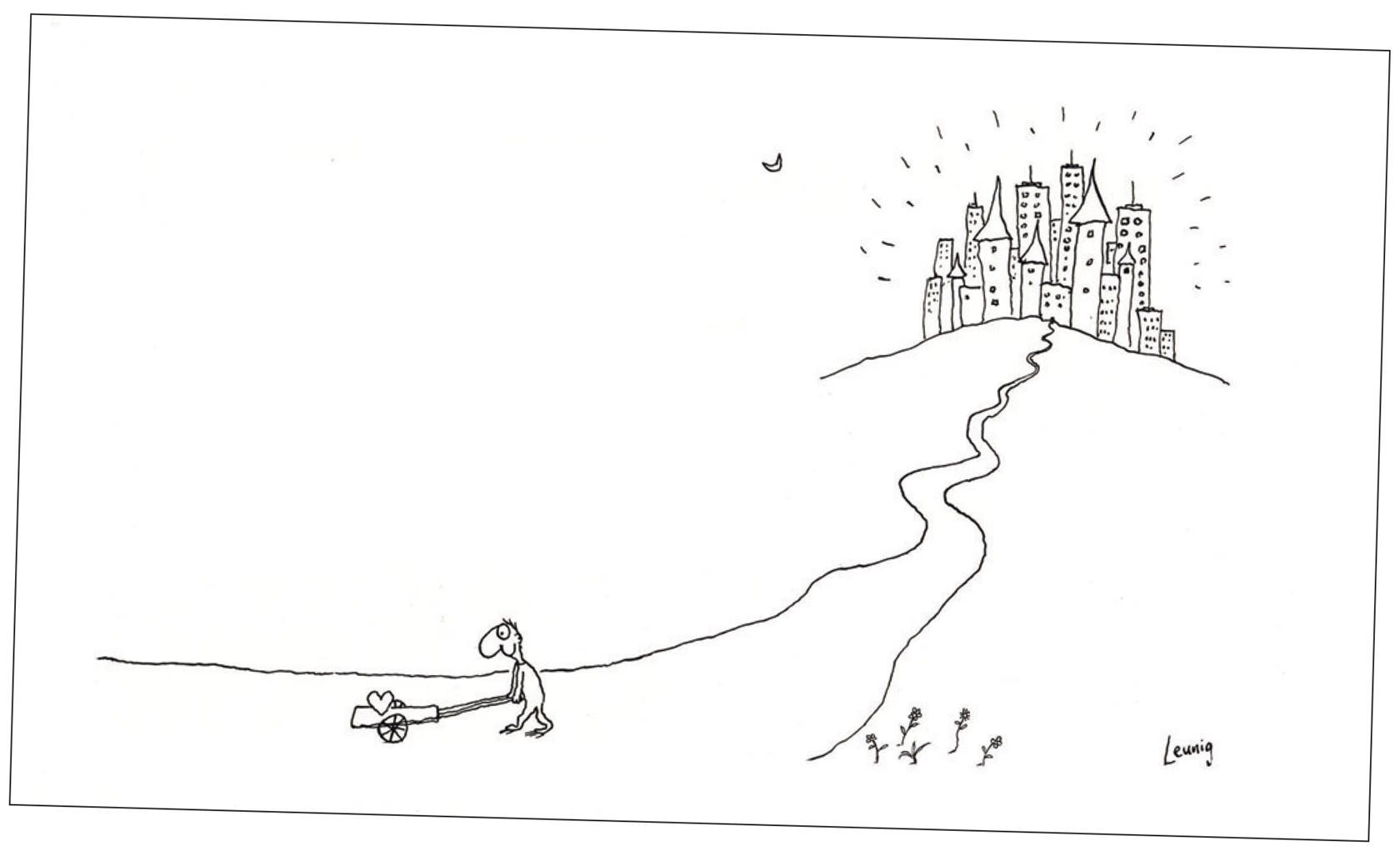Warm-up
1. You are going to hear three people who are having a day out together. Listen to part one and try to guess where the speakers are and what they are talking about.
2. Now listen to part two and try to match the pictures below with what each speaker describes.

Pre-reading
- When was the last time you went to an art exhibition? How often do you go to exhibitions?
- Describe the most interesting exhibition youʼve ever seen. What made it interesting or memorable?
- Do you have a favourite artist? Describe what you like about his or her work.
Reading
Read the text and answer the questions that follow.
How long does it take to look at a painting?
When I taught classes in the Art Institute in Chicago, I ran into people who came to the museum regularly, over a period of years.
One elderly woman told me she came to see one of the Art Instituteʼs Rembrandt paintings – a curious picture of a young woman, leaning on the bottom half of a Dutch door – three or four times a week during her lunch hour. How long had she done that? I asked. She said, “I donʼt know. Decades.” To be conservative, letʼs say she meant two decades, and letʼs say her lunch hour was one hour. Thatʼs 3,000 hours of looking. If looking had been her 9 to 5 job, thatʼs over a year of doing nothing but sitting in front of one painting. What amazing conversations she must have had with the woman in that painting!
Thereʼs a book by the Austrian novelist Thomas Bernhard, called Old Masters, in which a man goes to see a painting in the museum in Vienna every other day for his entire adult life. He does that for an entirely different reason than the woman in Chicago: he goes because heʼs so desperately misanthropic that he hates everything and everyone, except this one painting – a painting by Tintoretto – which he sort of likes. It is an unidentified portrait, so no story goes with it, only a face. He goes and sits in front of it and ponders how much he dislikes everything except that one manʼs face.
Either way, hate or love, to spend that much time in front of an artwork, you have to be in dialogue with it. You have to listen to it, and think something in response, and look again, and see how the work has changed. You have to believe that you can have an ongoing, evolving relationship with something that is unchanging. Many people might say that is impossible.
Looking for a long time is not the usual way people see artworks. The usual interaction with an artwork is a glance or a glimpse or a cursory look. What I have in mind is a different kind of experience: not just glancing, but looking, staring, gazing, sitting or standing transfixed: forgetting, temporarily, the errands you have to run, or the meeting youʼre late for, and thinking, living, only inside the work. Falling in love with an artwork, finding that you somehow need it, wanting to return to it, wanting to keep it in your life.
I would like to hear from anyone who has an experience like this, and from anyone who has spent a long time looking at an artwork. What happens after the first few minutes? Why do you want to return? There have been a number of surveys of how visitors interact with paintings in museums. One found that an average viewer goes up to a painting, looks at it for less than two seconds, reads the wall text for another 10 seconds, glances at the painting to verify something in the text, and moves on. Another survey concluded people looked for a median time of 17 seconds. The Louvre found that people looked at the Mona Lisa an average of 15 seconds, which makes you wonder how long they spend on the other 35,000 works in the collection. A survey at the Metropolitan Museum of Art supposedly found that people look at artworks for an average of 32.5 seconds each, but they must not have counted the ones people glance at.
The Internet has many entertaining pictures of people looking, or not looking, at paintings. This one is captioned “That man is not looking at a painting.”
All this goes to show that our encounters are usually brief encounters or non-encounters. But this is not a simple topic: […] Time, patience, immersion: these are qualities that some art continues to call for […]. Iʼm sorry I lost touch with that woman in the Art Institute who looked at the Rembrandt. I wonder, in the end, what it told her, and what she said to it.
So how long does it take to look at a painting? A lifetime, more or less.
(an excerpt from an article by Professor James Elkins)
Comprehension
- One elderly woman came every day during her lunch hour.
- Looking at paintings was her 9–5 job.
- One man hated everyone and everything except this one painting by Tintoretto.
- The author believes we should look at an artwork until it changes.
- Many people believe the Mona Lisa moves every 15 seconds.
- One survey found that people spend longer reading about artworks than looking at them.
- Old Masters is a novel written by the Australian author, Thomas Bernhard.
- The author lost touch with the elderly woman in Chicago.
- The author taught glass art at the Art Institute in Chicago.
- The man had gone to the museum in Vienna on alternate days since he became an adult.
- Why did the people spend so much time looking at the paintings? Why those particular paintings?
- Have you ever seen a painting you could have a dialogue with? If it was a portrait of someone, what would you like to ask the person in the painting? Make up questions and test them on your partner.
- Find out more about the author of the text James Elkins. What would you like to ask him about art? Would attending his classes improve your knowledge of art? What would you like to learn?
Vocabulary practice
A
painting curious conservative look exhibit picture entire misanthropic hate ponder dislike think believe impossible gaze glance transfixed unidentified wall text Mona Lisa need immerse amazing artwork viewer
- exhibit
- look
- think
- Mona Lisa
- believe
- picture
- hate
- gaze
- ponder
- transfixed
- wall text
- artwork
- curious
- painting
- misanthropic
- unidentified
- dislike
- impossible
- conservative
- entire
- spectator
- whole
- hypnotised, mesmerised
- cynical
- contemplate
- stare
- cautious
- plunge, engross
- peek
- image
- You shouldnʼt use the exhibits for support – they may get damaged.
- I have to make a short trip to the pharmacy to buy some aspirin.
- They continue to make efforts to find a cure for AIDS.
- She opened the upper part of the barn door so the horse could look outside.
- I havenʼt seen my uncle for ten years.
- They experienced unexpected opposition from the local authorities.
- The survey allegedly found that most people donʼt go to art museums.
- The Museum of Modern Art is closed for the time being.
- You have to confirm your identity to get access to the account.
- Information technology is developing at a fast pace.
- to fix the eyes in a steady intent; look often with eagerness or studious attention
- to ascertain by the use of oneʼs eyes
- to take a quick look at something
- rapidly and often superficially performed or produced; hasty view
- to get a brief look at
- to look fixedly often with wide-open eyes

Discussion
Look at these comments about art and answer the questions.
1. Do you:
- agree?
- disagree?
- think they are cliched and meaningless?
- think that people have probably always thought things like this about new art?
I donʼt know much about art, but I know what I like.
Give me a picture of something I can recognise any day – all those squiggles and dots! Whatʼs it supposed to mean?
Some art these days seems to go out of its way to make you feel bad. How can that be good art?
I think artists have lost touch with the general public. Most of their work seems to be aimed at other artists!
2. How would you respond if someone said these things to you?
3. What do you think would make going to art exhibitions more interesting?
4. Recent research in Norway has shown that people who visit art exhibitions from time to time are happier than those who donʼt. Can you explain this finding?

Monologue
- Read the full article by James Elkins on the internet, and using his description of the medieval religious painting as an example, describe an artwork you like from a museum somewhere in Estonia.
- Some people say that paintings are meant only for those people who have learned about art. Why do you think they say this? Do you agree? Give reasons.
